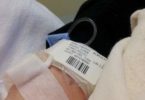What's in this article?
What is Trichomoniasis
Trichomoniasis is a sexually transmitted disease (STD) caused by a small organism called Trichomonas vaginalis. Women are most often affected by this disease, although men can become infected and pass the infection to their partners through sexual contact.
Symptoms of Trichomoniasis
Trichomoniasis often has no symptoms, especially in men.
When symptoms do occur, they can begin anywhere from three to 28 days after being infected.
The most common symptoms among women are:
- vaginal discharge, which may be white, gray, yellow, or green and usually has an unpleasant smell
- blood spotting
- burning or itching sensation in the genitals
- genital redness or swelling
- an urge to urinate frequently
- pain during urination or sexual intercourse
The most common symptoms among men are:
- discharge from the urethra
- burning during urination or after ejaculation
- an urge to urinate frequently
Causes of Trichomoniasis
Trichomoniasis is caused by a one-celled protozoan, a type of tiny parasite that travels between people during sexual intercourse. The incubation period between exposure and infection is unknown, but it’s thought to range from five to 28 days.
How Can I Know If I Have Trichomoniasis?
A health care provider can do tests to see if you have trichomoniasis, whether or not you have symptoms.
- If you’re a woman, your health care provider will give you a pelvic exam to take a sample of your vaginal discharge.
- If you’re a man, your health care provider will take a swab of your urethra to get a sample of the discharge.
The provider will then examine the discharge using a microscope to make a diagnosis.
Diagnosing Trichomoniasis
Trichomoniasis can sometimes be difficult to diagnose because symptoms are similar to those of other sexually transmitted infections (STIs).
If you think you may have trichomoniasis, you should visit your GP or your local genitourinary medicine (GUM) clinic.
Some GP surgeries offer an enhanced sexual health service for diagnosing and treating STIs. It may be better to visit a GUM clinic instead because these clinics can carry out accurate tests more quickly.
In some cases, your GP may refer you to a GUM clinic for tests and treatment if they think you have trichomoniasis.
Trichomoniasis Prevention
You can take steps to lower your risk of getting trichomoniasis and other STIs. The following steps work best when used together:
- Don’t have sex. The surest way to lower risk of trichomoniasis or any STI is to practice abstinence, which means not having vaginal, oral, or anal sex. Keep in mind that trichomoniasis can be spread through vulva to vulva contact.
- Be faithful. Having sex with one uninfected partner who only has sex with you will keep you safe from trichomoniasis and other STIs. Both you and your partner must be faithful all the time to avoid exposure. This means that you only have sex with each other and no one else. The fewer sex partners you have, the lower your risk of being exposed to an STI.
- Use condoms correctly and every time you have sex. Use condoms for all types of sexual contact, even if penetration does not occur. Use a condom from the very beginning to the very end of each sex act, and with every partner. For vaginal sex, use a latex male condom or a female polyurethane condom. For anal sex, use a latex male condom. For oral sex, use a dental dam.
- Know that some birth control methods and other methods don’t protect against STIs. Birth control methods including the pill, shots, implants, IUD, diaphragm, and spermicides, don’t protect against STIs. If you use one of these methods, make sure to also use a condom with every sex act. Washing genitals, passing urine, and douching after sex will not keep you from getting an STI.
- Talk with your sex partner(s) about using condoms before having sex. Set the ground rules so you can avoid misunderstandings in a moment of passion. Be clear that you will not have any type of sex, any time, without using a condom. Remember, it’s your body!
- Get tested for STIs. If either you or your partner has had other sexual partners in the past, get tested for STIs before becoming sexually active.
- Have regular checkups and pelvic exams even if you’re healthy. During the checkup, your doctor will ask you a lot of questions about your lifestyle, including your sex life. Answering honestly is the only way your doctor is sure to give you the care you need.
Trichomoniasis Treatment
Usually an oral antibiotic called metronidazole (Flagyl) is given to treat trichomoniasis. It is the only drug that should be used to treat trichomoniasis if there is any chance that you could be pregnant.
Your partner should also be treated at the same time to prevent reinfection and further spread of the disease. In addition, persons being treated for trichomoniasis should avoid sex until they and their sex partners complete treatment and have no symptoms. It is important to take all of your antibiotics, even if you feel better. You should get retested after three months to be certain the infection is gone, even if your partner has been treated.






Leave a Comment